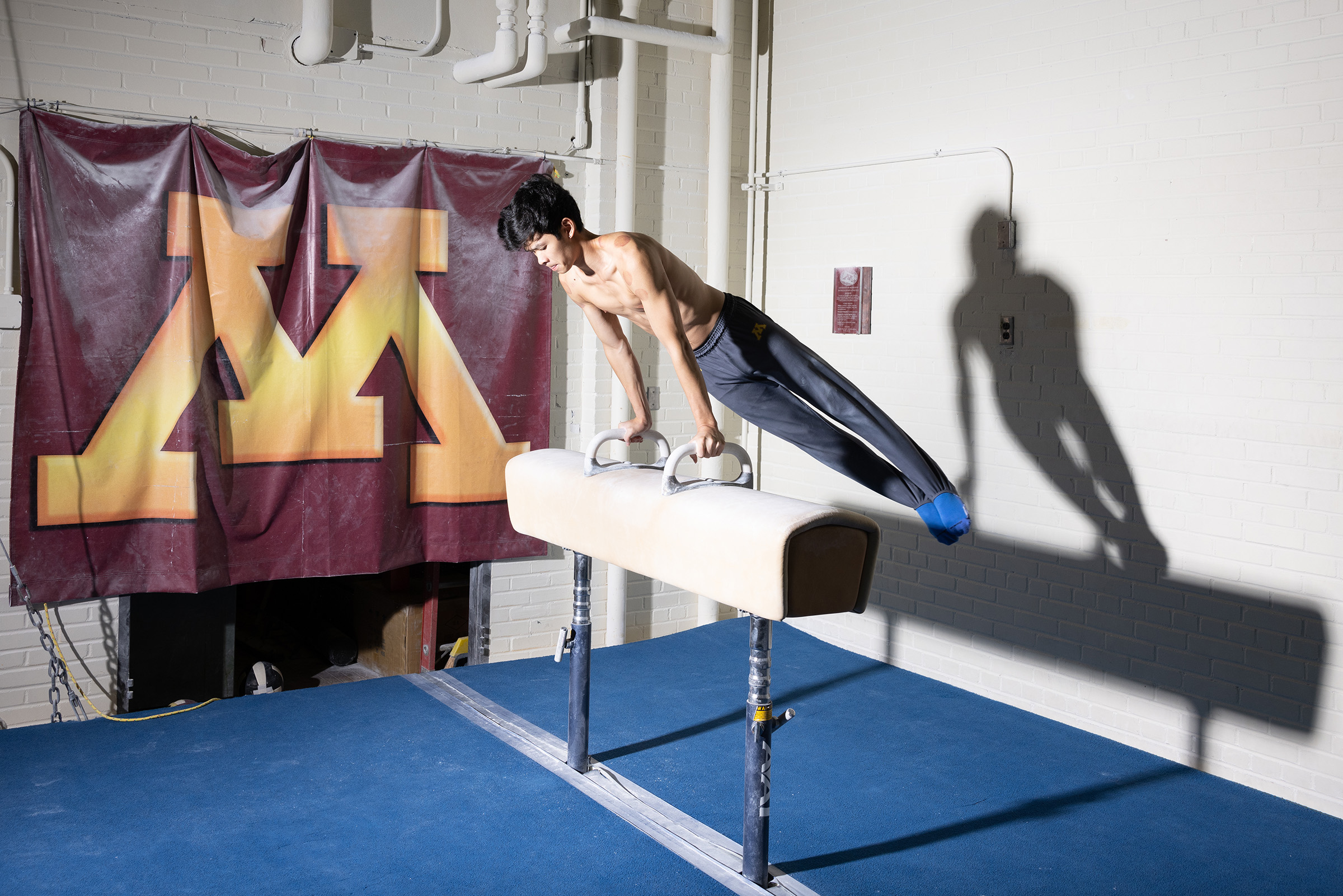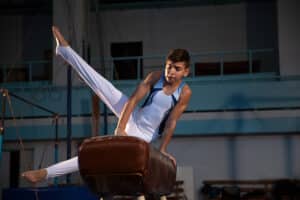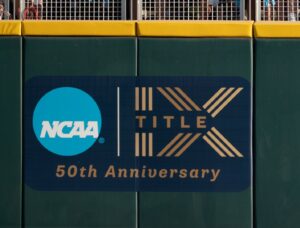Evan Ng was always an energetic kid. Growing up on Chicago’s North Side, Evan played soccer and swam, but gymnastics is where he stuck the landing. Evan’s parents put him in a recreational gymnastics class when he was five, and at age six, his skills caught the attention of a coach. By the time Evan was nine, he was competing on the national Future Stars Junior Elite (JE) team and became a five-time JE national qualifier and an all-around Regional Champion in 2019.
“It’s a sport like no other,” he says.
In high school, he competed nationally and received offers to compete at several NCAA Division I universities. One visit to the University of Minnesota and meeting head coach Mike Burns, and he was sold. Evan loved the team, the coaches, and the school. Although COVID-19 made his freshman year challenging, he looked forward to the next year and a fresh start to school and gymnastics.
His hopes were dashed, however, when he and his team learned of the university’s plans to eliminate three men’s sports programs—gymnastics, tennis, and indoor track and field—after the 2020-21 school year.
Losing the team hurt, but the reason stung even more. It wasn’t poor athletic performance—the Golden Gophers finished with a season high in overall points, and national titles on parallel bars and still rings. Nor was it subpar academic performance—the team had the highest grade-point average of any sport for the spring 2021 semester, with five members earning 4.0s.
The university’s initial claims of financial necessity didn’t hold water. The annual athletics budget is around $125 million. While it’s true that halting (and then delaying) fall sports, especially football, could mean tens of millions of dollars in lost revenue, the sports being eliminated would save only $1.6 million a year—about $825,000 for men’s gymnastics. Furthermore, the gymnastics program’s endowment of more than $900,000 largely supports the team’s scholarships.
Instead, the university pointed to Title IX, the federal law prohibiting sex discrimination in federally funded education. Minnesota administrators believe Title IX compliance requires that the ratio of male-to-female athletes align with the school’s entire undergraduate enrollment. For the 2020-21 school year, men made up a greater percentage of athletes (49.76%) than in the overall undergrad enrollment (46.77%). In the university’s eyes, male athletes were “overrepresented” by 2.99%.
That small a disparity, however, isn’t enough to trigger Title IX red flags. And the U.S. Department of Education’s Office of Civil Rights (OCR) found nothing wrong with the University of Minnesota’s 1.47% overrepresentation of women athletes in 2018.
Nevertheless, the university cut the men’s teams for the sole purpose of establishing a sex-based quota—clear violations of equal protection and Title IX. In fact, cutting sports programs on the basis that it has too many male athletes is precisely what Title IX forbids—decisions that deny opportunity based on sex.
Evan considered transferring and even quitting gymnastics but ultimately stuck with school. While his coach fought to resurrect men’s gymnastics as a self-funded club sport, Evan fought back against the unlawful decision to eliminate his team just because they are men.
Evan sued the University of Minnesota in federal court to defend his right to equality before the law and restore his opportunity to compete as a varsity athlete free of unjust attempts to reach statistical parity between male and female students. He was represented free of charge by PLF with the assistance of attorneys James Dickey and Doug Seaton of the Upper Midwest Law Center.
In May 2023, Evan voluntarily dismissed the case when it no longer became possible to win reinstatement of the team before his senior season.
What’s At Stake?
- Limiting opportunities for male athletes to compete in school sports by establishing sex-based quotas is precisely what Title IX forbids, and it does not increase opportunities for women.
- Title IX does not require strictly proportional numbers of male and female athletes to achieve its goal of eliminating sex-based discrimination in collegiate athletics.




















